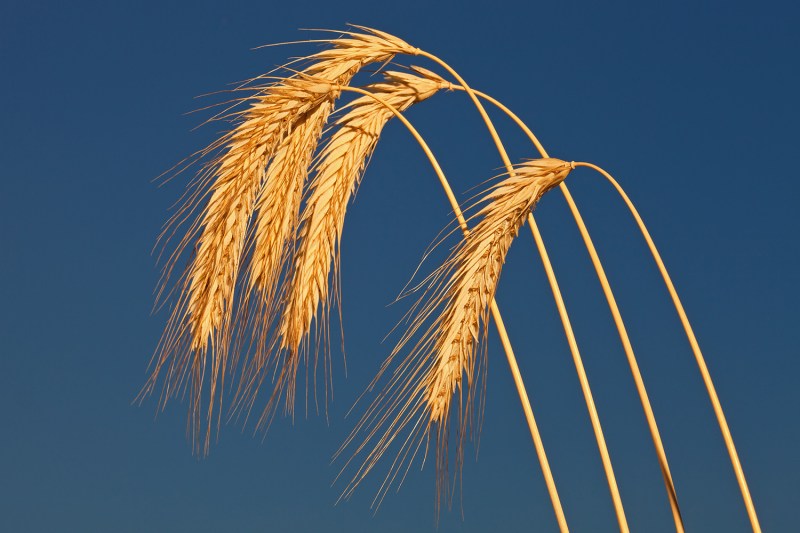As Ukraine continues to be battered by Russia’s brutal assault, the country’s government is battening down its hatches for the long haul. The latest evidence? The Ukrainian government banned the export of wheat and other food staples this week, a move that Roman Leshchenko, Ukraine’s minister of agrarian and food policy, said was necessary to “meet the needs of the population in critical food products” in a Facebook post.
With food prices already soaring due to pandemic-squeezed supply chains, Russia’s unprovoked attack on this sovereign nation further ratchets up pressure on U.S. food prices and reverberates around the world, raising the risk of severe food shortages in some of the poorest nations. This war brings our global food system into focus like never before, but there is some encouraging news on the surrounding edges of what is a bleak vista.

According to the Food and Agriculture Organization of the United Nations, “wheat alone accounts for an estimated 20% of human calorie consumption.” Depending on your source, Ukrainian and Russian wheat exports account for anywhere between 20 and 30% of the world’s wheat exports in a region known as Europe’s breadbasket.
Not only will this war have a detrimental effect on American bread and cereal prices, but countries across the Sahara — North Africa and the Middle East and into Asia — rely heavily on wheat imports from Russia and Ukraine. The International Grains Council (IGC), in fact, cites that about one-third of Ukraine’s total wheat exports are shipped to three countries: Egypt, Indonesia, and Bangladesh.
The IGC also notes that since the start of February, the grains and oilseed price index has leaped up by 17%, driven by a 28% rise in wheat prices, a 23% jump in maize rates, and a 22% climb in barley. (Russia and Ukraine account for one-fifth of global barley exports and Ukraine is the world’s fourth-largest corn exporter.)
Where this news raises the risk of severe food shortages and hunger in some regions of the globe and threatens to further raise food costs have already jumped by about 11% since the start of the pandemic, it also brings into focus positive news from other parts of the world.
Some domestic farmers will benefit from higher prices for wheat and corn as supplies continue to be constricted. Fertilizer prices are bound to rise and livestock producers will have to spend more on feedstock. Higher barley prices will mean more cost to produce beer, driving up prices at the register.
These costs may hurt in the U.S., but they could be devastating in countries like the now Taliban-controlled Afghanistan, which faces a food crisis under its new rulers. Self-imposed international isolation accompanies a cruel drought in the country, putting millions of lives at risk. There is hope for the country, however, from an antagonistic neighbor: India.
India is now the world’s second-largest exporter of wheat, accounting for more than 13% of all global output. Since the 1960s, Indian wheat production has skyrocketed, increasing to almost 110 million metric tons in 2021. As Indian wheat exports will likely exceed their previous 2012-2013 peak, the country has committed to sending food aid to Afghanistan.
Higher grain prices also can prospectively improve the livelihoods of millions of sub-Saharan Africans. McKinsey & Company, a global management consulting firm, estimates that more than 60 percent of the population of sub-Saharan Africa is smallholder farmers. When prices rise, farmers produce more and earn more. About 23 percent of sub-Saharan Africa’s GDP comes from agriculture and McKinsey posits that farmers there could produce much more. These growers could potentially double or even triple their output of grains, livestock, and other products with a significant world investment. This includes investment in agricultural elements like irrigation, fertilizer, hybrid seeds, and storage as well as money towards basic infrastructures, like roads, ports, and electricity.
According to a 2021 Board for International Food and Agricultural Development study, sub-Saharan food output, driven by rising food prices, grew twice as fast from 2000 to 2018 as it did from 1980 to 1999.
Still, higher food prices are a stress for hundreds of millions of people. In turn, these will likely become an important part of Russian propaganda, blaming Ukraine and the rest of the West for this increased burden. What this does, though, is bring our interdependence into clear view and, hopefully, encourages nations to come together to not only deal with the current conflict but to spur the wealthiest countries to increase investment and supply infrastructure for food producers and work together to provide aid to those who need it most.



